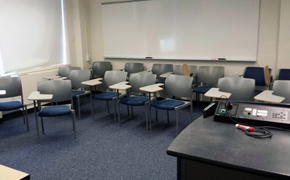This Course at MIT pages are part of the OCW Educator initiative, which seeks to enhance the value of OCW for educators.
This Course at MIT pages provide context for how the course materials published on OCW were used at MIT. They are part of the OCW Educator initiative, which seeks to enhance the value of OCW for educators.
Course Overview
This page focuses on the course 21G.053 Understanding Contemporary French Politics as it was taught by Professor Bruno Perreau in Spring 2014.
The course examines contemporary French politics, culture and social life from 1958 to the present. Students give speeches and participate in debates and a mock presidential election.
Course Outcomes
Course Goals for Students
Students may take the course in order to
- discover French institutions and understand the impact of political issues in contemporary France;
- grow in terms of public speech, develop their ability to synthesize and argue in writing;
- learn how to develop a network of supporters and allies.
The class attracts students who
- want to learn more about French society and culture in preparation for a visit or internship;
- are interested in learning more about politics, especially to acquire another understanding of the American regime through the study of a different governmental system.
Curriculum Information
Prerequisites
There are no prerequisites for this course.
Requirements Satisfied
HASS Social Sciences CI-M ![]()
Offered
Taught during the spring semester, this course is not offered regularly.
Assessment
The students' grades were based on the following activities:
 20% One ten-minute speech
20% One ten-minute speech 30% Three historical notes
30% Three historical notes 40% Six-page political statement
40% Six-page political statement 10% One-hour presidential debate
10% One-hour presidential debateStudent Information

Breakdown by Year
Mainly juniors and seniors, but varies from year to year.
Typical Student Background
Many students who have taken the course were interested in public speech, debate, influencing others, French society and culture, or who returned or will travel to France, and those interested in studying a different political system.
During an average week, students were expected to spend 12 hours on the course, roughly divided as follows:
In Class
- Met 1 time per week for 3 hours per session
- Sessions were divided between student speeches related to weekly issues, film screenings, and debates
Out of Class
Student work included readings, research, writing historical notes, a political statement, preparing speeches and for debates.
Semester Breakdown
| WEEK | M | T | W | Th | F |
|---|---|---|---|---|---|
| 1 |  |  |  |  |  |
| 2 |  |  |  |  |  |
| 3 |  |  |  |  |  |
| 4 |  |  |  |  |  |
| 5 |  |  |  |  |  |
| 6 |  |  |  |  |  |
| 7 |  |  |  |  |  |
| 8 |  |  |  |  |  |
| 9 |  |  |  |  |  |
| 10 |  |  |  |  |  |
| 11 |  |  |  |  |  |
| 12 |  |  |  |  |  |
| 13 |  |  |  |  |  |
| 14 |  |  |  |  |  |
| 15 |  |  |  |  |  |
| 16 |  |  |  |  |  |
 No classes throughout MIT
No classes throughout MIT Class session
Class session Assignment due date
Assignment due date No class session scheduled
No class session scheduled In class debate
In class debate

 Room 1 of 1
Room 1 of 1 